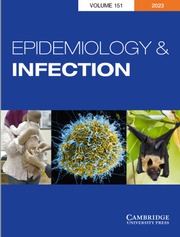Article contents
Poliomyelitis surveillance in England and Wales, 1969–1975
Published online by Cambridge University Press: 15 May 2009
Summary
Poliomyelitis continued to be a rare disease in England and Wales in the period 1969–75. Only 31 paralytic and 44 cases of possible non-paralytic poliomyelitis were recorded during the 7 years.
Of the 31 paralytic cases approximately one third were vaccine-associated; 3 were patients who had recently received oral poliovaccine and 7 had been in contact with a vaccinated person. Five of these 7 patients were parents of recently vaccinated children. The rate of vaccine-associated poliomyelitis was estimated in recipients to be 0·2 and in contacts 0·4 per million doses of vaccine given.
Marker test results were reported on 555 strains of poliomyelitis virus isolated during 1969–75, using the reproductive capacity temperature test. Forty-eight (8·6%) resembled wild virus in this property, 15 strains being type 1, 8 type 2 and 25 type 3. Most of these isolations of apparently wild virus were from excreters with no symptoms of poliomyelitis, although 3 of the 15 type 1 strains were from patients with paralytic poliomyelitis and 3 from possible cases of non-paralytic poliomyelitis. None of the 8 apparently wild type 2 viruses was from a case of paralytic illness and only 1 of the 39 type 3 strains.
Eleven of the 31 paralytic cases were in patients in whom the infection was likely to have been acquired abroad.
- Type
- Research Article
- Information
- Copyright
- Copyright © Cambridge University Press 1978
References
REFERENCES
- 7
- Cited by


